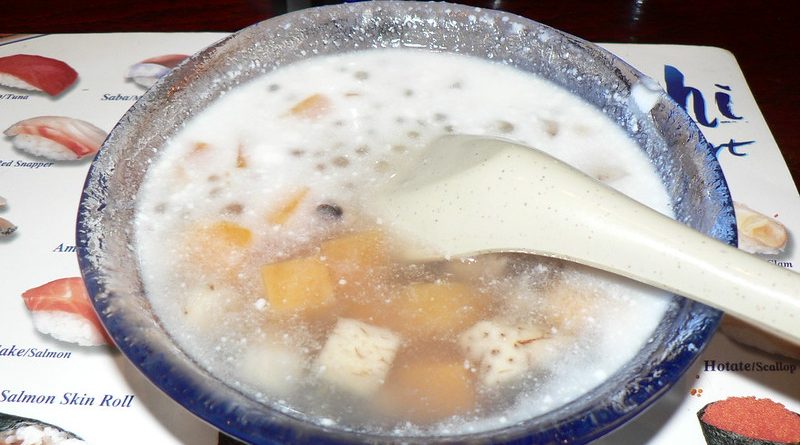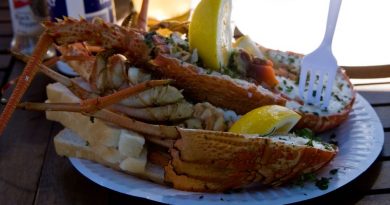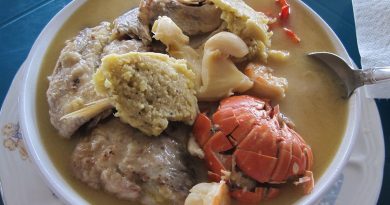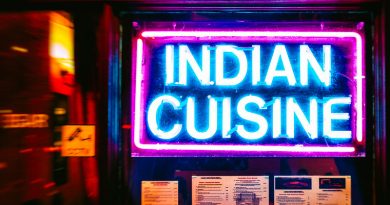The Food of Penang
Audio
Known as the “Pearl of the Orient”, Penang is a gem of an island.
Situated off the west coast of Malaysia ,ithe island is richly endowed with a multicultural people and with that, a variety of food that boggles the mind.
Penang is known as “the Hawker’s Paradise” .
Penang food incorporates bits and pieces of so many different Asian traditions that it is hard to pin down what actually is Penang Cuisine.
Nevertheless, street food here is as inventive and delicious as they come.
Despite the rest of Malaysia being predominantly Malay – this island is made up of mainly Chinese and one of the biggest Indian communities in the country.
A trishaw ride is one of the best way to see Penang. The best thing about the trishaw is that it gives me a chance to stop whenever I see an interesting food stall!
And the capital ,Georgetown has one of the most unusual waterfronts in Asia. It affords exhilarating views of the harbour. The beauty of the surroundings worth taking a second look.
The majority of Indians here are Tamils from the south Indian states of Tamil Nadu. They like their food very spicy as the chilli is believed to cool the body down.
Roti Canai is an -time breakfast favorite.
Roti Canai is a sort of fried croissant originating from south India. The wheat flour that is used makes for dough that can be tossed and stretched till it is paper-thin.
It is fried on a hot, oily griddle and then served with curry gravy.
For some who do not like it spicy, instead of eating their roti canai with curry, they can sprinkle sugar over it and turn it into a savoury-sweet pancake.
The Roti Canai is a popular choice for breakfast and even supper, but to be honest, locals eat it any time as and when they feel like it!
Apart from the curry – what goes really well with a the roti canai is a Teh Tarik. You can’t miss this one.. or maybe you can.
Teh Tarik literally means ‘pulled tea’. The skilled ‘bartender pours piping hot tea from a mug into a waiting glass, creating this delicious layer of froth.
The higher the pull the thicker the froth.
“Pulling” the tea releases the strong aroma and the subtle taste of the tea. Also, the beverage cools to a perfect temperature .
The huge variety and quality of street food in Penang makes it cheaper, easier and tastier to eat out.
Visitors from neighboring countries have been known to make regular trips to the island just for its hawker food!
Chowrasta Market is the oldest market in Penang and has a wide selection of fresh meat, fish vegetables, and dry goods…
Surrounded by heritage buildings, mornings at this 120 year old market are hectic affairs.
Street vendors line both sides of the street in the open air,. Here one can expect to experience a variety of sights and smells, some pleasant some not so.This is the best place to get a taste of authentic Penang cuisine in the morning.
Some highlights include:
Bobo Cha Cha – Nyonya dish
A sweet dessert made form steamed sweet potatoes, yam, tapioca, jelly in coconut milk
Ham Chin Peng
Deep fried snake made form sweet and salty dough, sometimes filled with red bean
Mua Chee
Made from glutinous rice flour, chopped into small pieces and rolled in ground peanuts
Bang Chang Kuih – Chinese Pancake
It is made from flour and egg butter, dusted with sugar
Rojak
Mixture of many different things. It is the same as the salad you can find in Western countries. This dish has been very much appreciated by Malaysians. Penang rojak is a famous dish here . Fresh pineapple, cucumber, sweet turnip (bangkwang), star fruit, green mangoes, pink guavas, bean curds (tau kua) are mixed in hoi sin sauce, prawn paste (hae ko), white sugar, chili powder, shrimp paste (belacan) and finally garnished with pounded roasted ground nuts. Rojak is easily available in hawker centers and food courts. The price is reasonable. Therefore, it is a great value for your money.
Chendol
This is a must try dessert in Penang. Green pandan flavoured noodles that look like spaghetti but is green in colour and mixed with coconut milk, brown sugar and big yummy red bean. Served with crushed ice
Durian
King of all fruits. This is creamy and fleshly with a big seed. Its a fruit that you either love or hate because of its smell .
Three important criteria to remember,- the colour must be even ranging from pale white to golden yellow, or to orange.; the aroma must be strong or a light .; the texture should be creamy dry, sweet or bitter sweet.
The best known local food. products of Penang are dried nutmeg and betel nut. The name Penang is derived from the word “Pinang”, the Malay name for the betelnut.
The betel nut is a product of great cultural and symbolic significance to the Malay, being used in everything from marriage ceremonies and shamanic rituals to cosmetics.
Nutmeg. is very popular as a food, spice and even as medicine. Preserved nutmegs are a specialty snack unique to Penang.Eaten fresh with dark soya sauce and chopped cabai burung (chilli padi), the astringent bite of nutmeg is an experience unto itself.
The island is also famous for it local traditional confectioneries and pastries. There are many types to choose from, but all time favourites is the button shaped, Tau Sar Peah.
There are also. many varieties of pastries; made from red bean, green bean and lotus bean paste.
Tau Sar Peah is suitable for eating anytime of the day. Locals use it as an offering to Taoist gods.
Penang has a bustling Peranakan community – and their cuisine is one of the country’s finest.
The cuisine is the legacy of the Baba & Nyonya, the descendants of the Chinese immigrants who married the local Malay women in the Straits settlement in Penang.
Nyonya women often stayed at home, finessing their dishes and creating the Nyonya cuisine.The quintessential Penang Nyonya dish is the Penang LAKSA!
Nyonya food often consists of an exotic blend of Chinese and Malay dishes. The style of cooking is quite elaborate involving a fine mixture of spices and herbs.
Penang used to an industrious port that served to replenish company ships on their long haul to China in the flourishing tea and opium trade, and as a headquarter to further British interests in Southeast Asian waters
Still today approximately 6000 inshore fishermen live along the river and coast on Penang Island. They make their living through traditional fishing methods.
Teluk Bahang is a quiet fishing village, at the tail-end of the coastal road on the northern side of Penang Island.
The main focus of daily life here is the two long fishing boat piers, the rickety but picturesque old pier, & the spanking new one.
Teluk Bahang, which means glowing bay.,is only 5 kms west of Batu Ferringhi. The long spindly pier towards the far end of the village with its multitude of fishing boats is the focus of daily life.
With fishing being a major economic activity on the island, Penang is naturally a haven for seafood and a handful of restaurants have already achieved legendary status among locals and foreigners.




